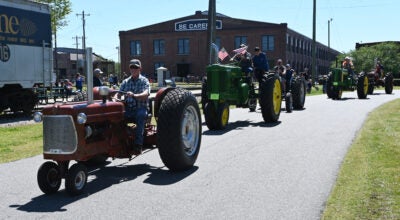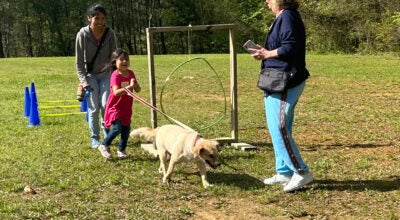Cowden column: Where is the farmland gone?
Published 12:00 am Wednesday, December 2, 2009
The young man married his high school sweetheart and started dairy farming on 150 acres on the outskirts of town. Through the years, they raised three children, with the eldest son staying on the farm.
The town continued to grow and stretched out towards the farm. Homes sprung up along a road behind the farm, and a shopping plaza moved in near the front of the farm. In less than 25 years, the farm could no longer be seen from the main road, except for two tall silos that appeared to be growing out of the town.
At 58, the father died suddenly, leaving his son and family to manage the farm. The son’s son ó third generation ó was interested in farming, but with no land to produce crops to feed the animals or expand the operation, he had to find a job elsewhere.
The dairy was soon sold, the silos torn down and the barn used for storage. The son and his family still live in the farmhouse, which looks like its part of a residential development.
This once picturesque farm is now only a memory to me. My uncle and cousin were the proud owners of this farm, which I visited many times as a child. Unfortunately, it fell to the pressures that claim many farms.
North Carolina farmland is disappearing. Since 1990, North Carolina has lost more than 14,000 farms. Between 2003 and 2006, 5,500 farms with more than 300,000 acres were lost. For comparison, Rowan County has 327,300 acres.
Why is it important to preserve farms in Rowan County? By preserving the land that produces the animal and plant products we need for subsistence, it helps to sustain the local economy. Annual receipts from Rowan County farms totaled $43.5 million in 2006. This was primarily for crops and livestock purchased.
Next to commercial use, agriculture more than pays its way in tax revenue. Residential use, on the other hand, does not generate sufficient reserve to cover the county’s expenses.
When farms are kept in agriculture, it maintains the quality of life that many of us enjoy everyday. Rural working landscapes are an integral part of our heritage and should be preserved for future generations. Some farms in Rowan County have remained in one family’s hands for more than 200 years.
The consumer today likes to buy locally grown products. Consumers may visit the Downtown Farmers Market; buy pasture beef, pork or poultry; or stop and pick their own fresh produce from local farms. Organically-grown produce is also popular with some producers, and many will travel a distance to obtain fresh items.
Rowan County is already taking steps to preserve and protect farmland and open space. The Voluntary Farmland Preservation program protects farmland from non-farm development. As of February, 9,242 acres have been enrolled.
The county has the distinction of having the first voluntary agriculture preservation program in the state, beginning in 1990, and many landowners have recognized the need to preserve their land for future generations.
In 2007, the legislature put $8 million in the N.C. Agricultural Development and Farmland Preservation Trust Fund Rowan County farms have applied for some of these funds and hope to hear something later this year.
Some farms in Rowan County are enrolled in federal farmland protection programs or committed their land for conservation easements. It takes a real faith to lock up your farm in a permanent conservation easement, but those who do have peace of mind that their land is protected.
Once farmland and open space is developed, it doesn’t return. Tomorrow may be too late to do something about this loss.




